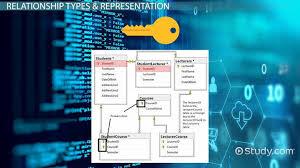Types of Database Relationships in SQL Server
SQL Server is a popular relational database management system that provides various tools for organizing, managing and retrieving data. One of the most important aspects of a relational database is the relationships between tables, which define how data is linked and organized. Let's explore the different types of database relationships that can be established in SQL Servers.
One-to-One Relationship
A one-to-one relationship occurs when each record in one table is associated with only one record in another table. This type of relationship is used when a single record in one table needs to correspond to a single record in another table.
For example, an employee record may be associated with a single user account, with each account being unique to a single employee.
One-to-Many Relationship
A one-to-many relationship occurs when a single record in one table is associated with multiple records in another table. This type of relationship is used when a single record in one table needs to correspond to multiple records in another table.
For example, a customer record may be associated with multiple order records, with each customer having placed multiple orders.

Many-to-Many Relationship
A many-to-many relationship occurs when multiple records in one table are associated with multiple records in another table. This type of relationship is used when multiple records in one table need to correspond to multiple records in another table.
For example, a product record may be associated with multiple categories, with each category having multiple products.
Establishing Relationships
In SQL Server, relationships between tables can be established using primary and foreign keys. A primary key is a unique identifier for each record in a table, while a foreign key is a reference to the primary key of another table. By linking tables through primary and foreign keys, SQL Server can enforce referential integrity, which ensures that data is consistent and accurate.
Conclusion
SQL Server provides various tools for establishing relationships between tables, which are essential for organizing and managing data. The three main types of relationships are one-to-one, one-to-many, and many-to-many, each of which corresponds to a different type of data association. Using primary and foreign keys, SQL Server can enforce referential integrity, ensuring that data is consistent and accurate. Understanding these relationships is essential for effective database design and management.